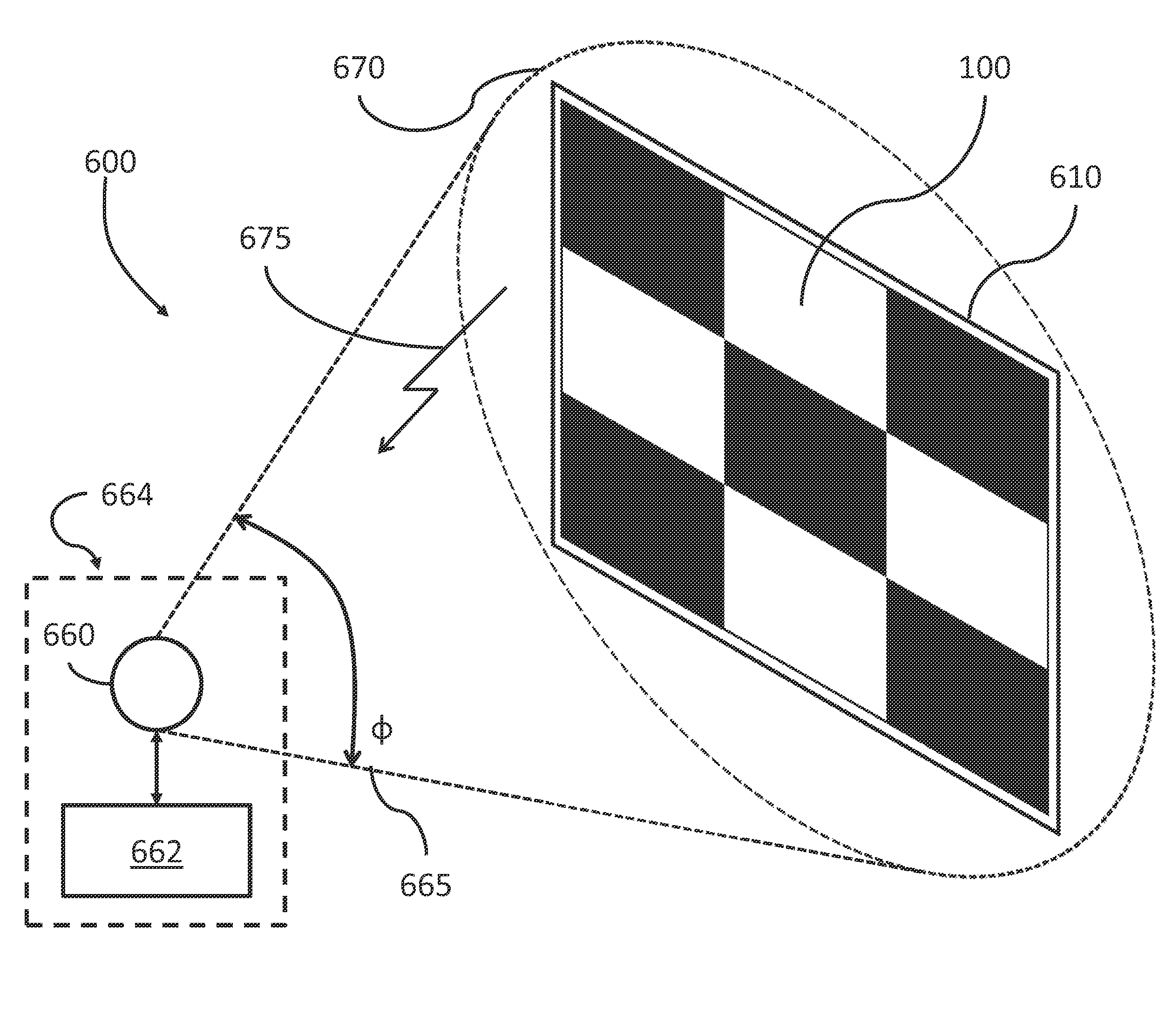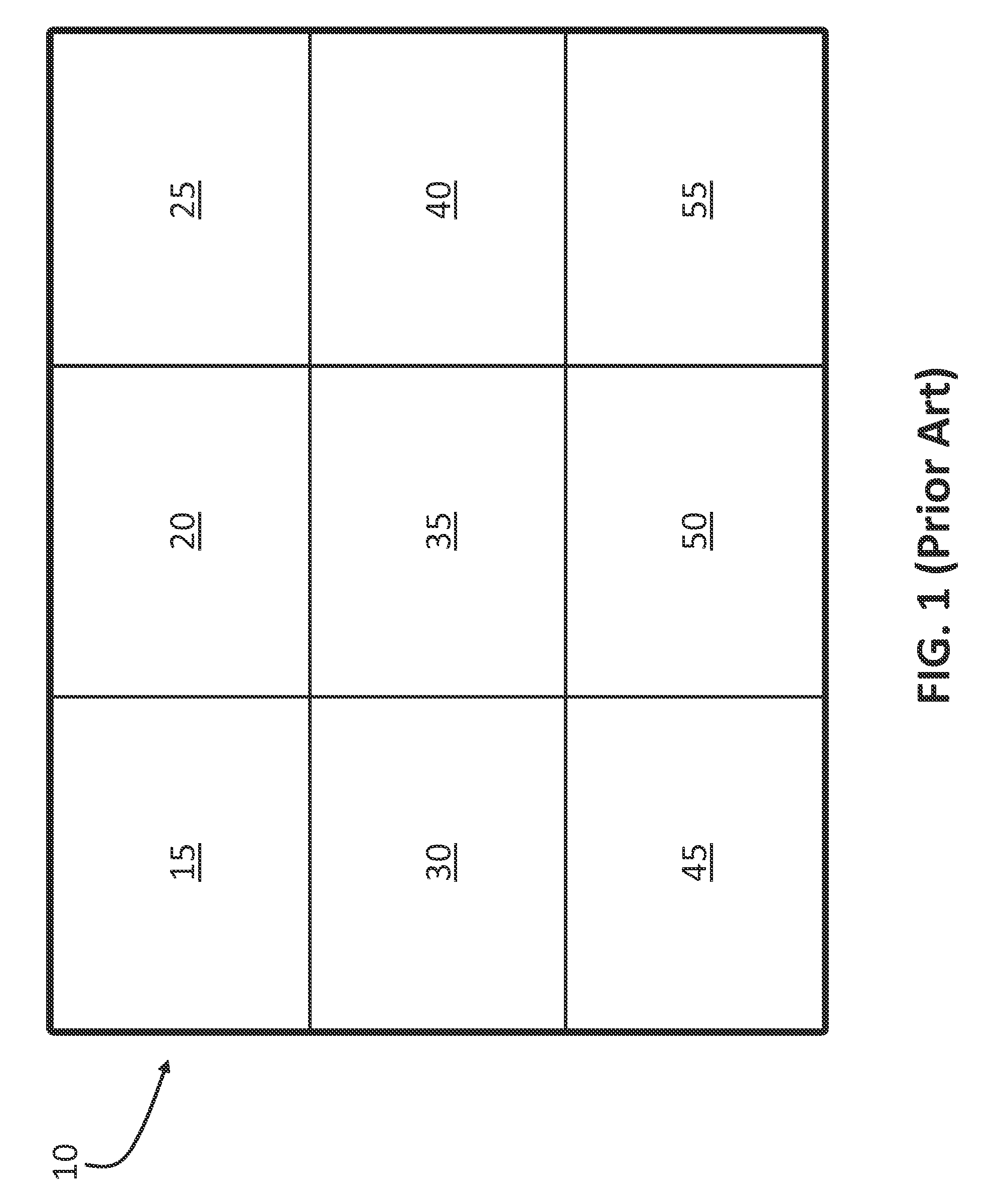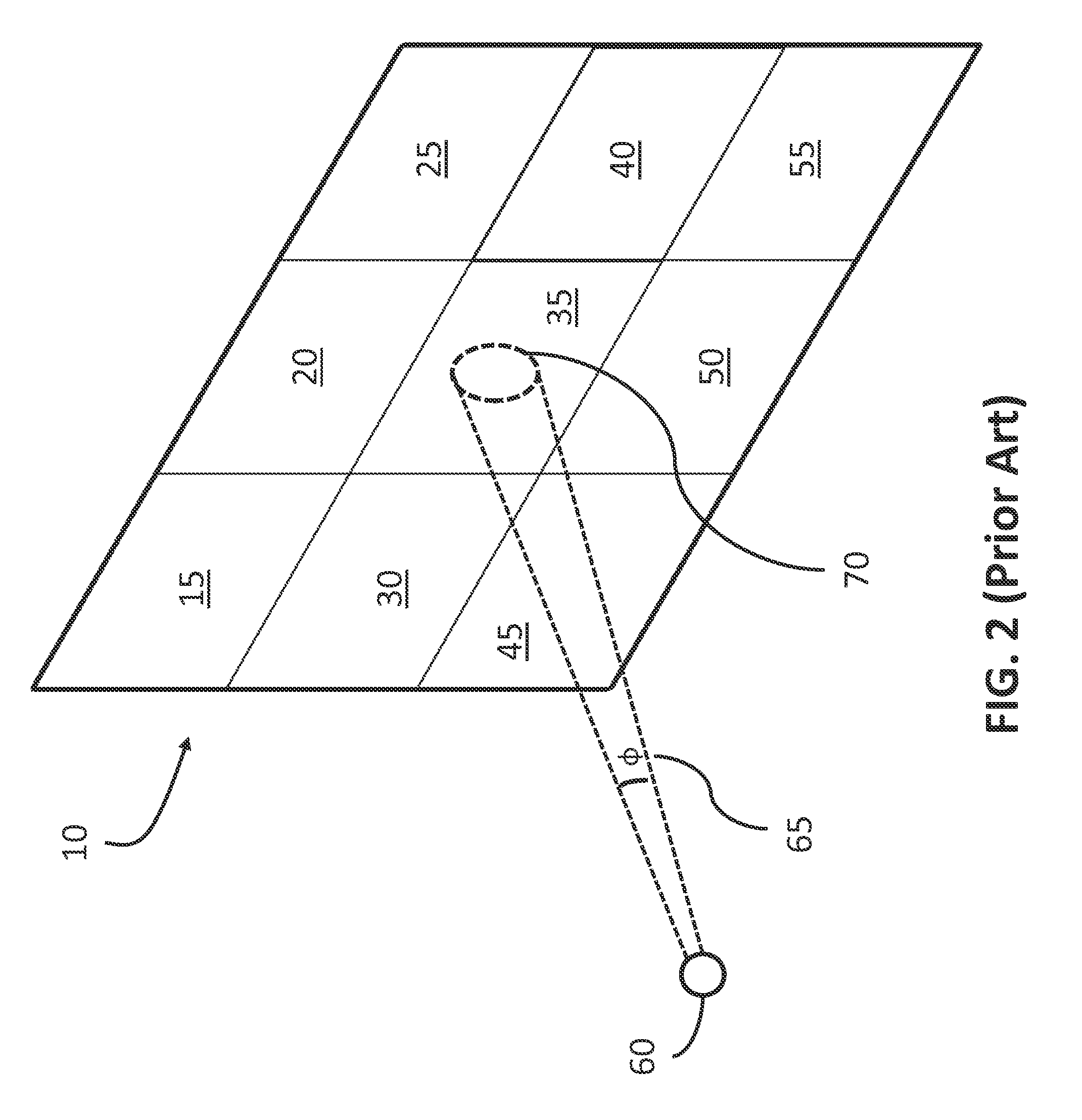Apparatus and Method to Measure Display Quality
a technology of video display and display screen, applied in the field of measuring the quality of video display, can solve the problems of non-uniformity of illumination, appearance of “darkness”, and screen dirtying or damage, and achieve the effect of high average brightness
- Summary
- Abstract
- Description
- Claims
- Application Information
AI Technical Summary
Benefits of technology
Problems solved by technology
Method used
Image
Examples
Embodiment Construction
[0020]FIG. 1 shows a prior art video display screen 10 logically divided into nine equally sized rectangles (shown by thinner lines) that define the nine measurement zones required by the relevant SMPTE measurement standard. Each zone may be referred to by a name corresponding to the zone's row and column position on the screen, from the perspective of a person viewing the screen. For example, the four “corner” zones 15, 25, 45, and 55 may be referred to, respectively, as the “top-left,”“top-right,”“bottom-left,” and “bottom-right” zones. The four “edge” zones 20, 30, 40, and 50 may be referred to, respectively, as the “top-center,”“center-left,”“center-right,” and “bottom-center” zones. Zone 35 may be referred to as the “center” zone.
[0021]FIG. 2 shows a perspective view of a spot light meter 60 being used to measure luminance of the display 10 of FIG. 1 according to a conventional method. A full brightness (all white) image is displayed on the screen 10. From a selected viewing lo...
PUM
| Property | Measurement | Unit |
|---|---|---|
| luminance | aaaaa | aaaaa |
| luminance uniformity | aaaaa | aaaaa |
| color | aaaaa | aaaaa |
Abstract
Description
Claims
Application Information
 Login to View More
Login to View More - R&D
- Intellectual Property
- Life Sciences
- Materials
- Tech Scout
- Unparalleled Data Quality
- Higher Quality Content
- 60% Fewer Hallucinations
Browse by: Latest US Patents, China's latest patents, Technical Efficacy Thesaurus, Application Domain, Technology Topic, Popular Technical Reports.
© 2025 PatSnap. All rights reserved.Legal|Privacy policy|Modern Slavery Act Transparency Statement|Sitemap|About US| Contact US: help@patsnap.com



